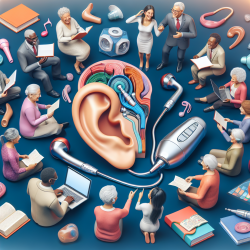In the ever-evolving field of special education, practitioners continually seek strategies to enhance the learning experiences of children with developmental language disorder (DLD). A recent study titled Word learning and verbal working memory in children with developmental language disorder offers valuable insights into how word learning and verbal working memory interact in children with DLD. This blog will explore the study's findings and suggest practical applications for speech-language pathologists (SLPs) and educators.
Understanding the Study
The study involved 50 children with DLD and 54 typically developing (TD) children. Over four days, these children were taught eight novel words, with assessments conducted on encoding, re-encoding, and retention. The tasks included Naming, Recognition, Description, and Identification, which tested different aspects of word learning.
Key Findings
- Children with DLD performed comparably to TD children on the Identification task, indicating an intact ability to learn form-referent links.
- However, children with DLD showed significant impairments in Naming and Recognition tasks, pointing to difficulties in learning novel word forms and meanings.
- Verbal working memory was a significant moderator of performance, particularly for the Naming and Recognition tasks. Children with DLD and poor verbal working memory had the lowest accuracy levels.
Implications for Practice
The findings suggest several strategies that SLPs and educators can implement to support children with DLD:
1. Comprehensive Assessment
Assess word learning using a variety of tasks that evaluate the ability to learn word forms, meanings, and form-referent links. This comprehensive approach will help develop a profile of each child's strengths and weaknesses.
2. Focus on Verbal Working Memory
Assess verbal working memory to identify children at particular risk of word learning deficits. Tailor interventions to address both language and memory challenges.
3. Intensive Training
Children with DLD benefit from higher training intensity. Provide frequent and repeated exposures to new words to facilitate encoding and retention.
4. Use of Cues and Supports
Incorporate orthographic and gestural cues to support word learning. These additional supports can help reinforce phonological and semantic representations.
Encouraging Further Research
While this study provides valuable insights, further research is needed to explore optimal intervention intensities and the long-term retention of new vocabulary. Practitioners are encouraged to stay informed through ongoing research and to apply evidence-based practices in their work.
To read the original research paper, please follow this link: Word learning and verbal working memory in children with developmental language disorder.










